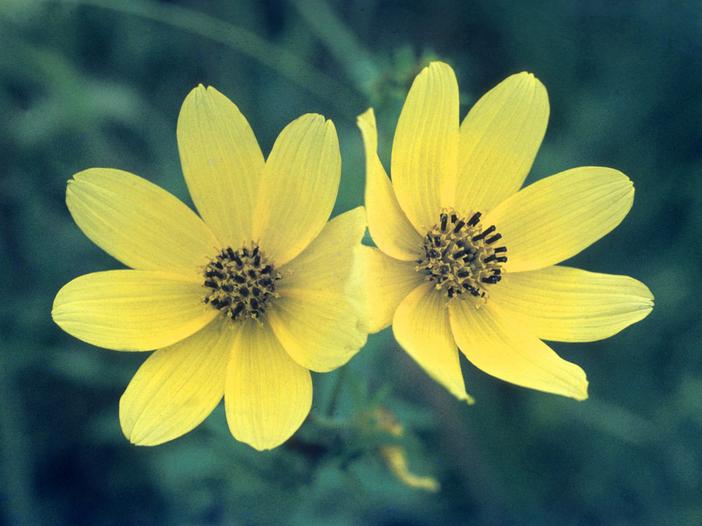Marsh Beggar-Ticks
(Bidens trichosperma)
Marsh Beggar-Ticks (Bidens trichosperma)
/
/

Robert H. Mohlenbrock. USDA NRCS
Public domain
Image By:
Robert H. Mohlenbrock. USDA NRCS
Recorded By:
Copyright:
Public domain
Copyright Notice:
Photo by: Robert H. Mohlenbrock. USDA NRCS | License Type: Public domain | License URL: https://creativecommons.org/public-domain/ | Uploader: Nonenmac | Publisher: Wikipedia Commons














Estimated Native Range
Summary
Bidens trichosperma, commonly known as Marsh Beggar-ticks or Marsh Tickseed, is an annual herb that is native to wet meadows, marshes, stream banks, and other moist habitats in central Canada and the eastern and north-central United States. It can grow to a height of up to 59 inches and typically features a branching form with slender stems. The plant produces numerous yellow flower heads from late summer to fall, each with both disc and ray florets that are moderately showy and attract pollinators. The foliage is typically green and lance-shaped, adding to the plant’s overall aesthetic.
Marsh Beggar-ticks are valued for their ability to thrive in wet conditions and provide ecological benefits, such as supporting pollinators and serving as a food source for wildlife. They are often used in native plant gardens, rain gardens, and as part of wetland restoration projects due to their adaptability to moist soils and their role in habitat creation. This species prefers full sun to part shade, consistently moist to wet soil, and does not require rich or fertile conditions to flourish. While generally low-maintenance, it can self-seed prolifically, which may be considered undesirable in some garden settings.CC BY-SA 4.0
Marsh Beggar-ticks are valued for their ability to thrive in wet conditions and provide ecological benefits, such as supporting pollinators and serving as a food source for wildlife. They are often used in native plant gardens, rain gardens, and as part of wetland restoration projects due to their adaptability to moist soils and their role in habitat creation. This species prefers full sun to part shade, consistently moist to wet soil, and does not require rich or fertile conditions to flourish. While generally low-maintenance, it can self-seed prolifically, which may be considered undesirable in some garden settings.CC BY-SA 4.0
Plant Description
- Plant Type: Herb
- Height: 2-5 feet
- Width: 1-2 feet
- Growth Rate: Moderate
- Flower Color: Yellow
- Flowering Season: Summer, Fall
- Leaf Retention:
Growth Requirements
- Sun: Full Sun, Part Shade
- Water: Medium, High
- Drainage: Medium, Slow
Common Uses
Bee Garden, Bird Garden, Butterfly Garden, Erosion Control, Low Maintenance, Water Garden
Natural Habitat
Wet meadows, marshes, stream banks, and other moist habitats
Other Names
Common Names: Bur-marigold, Marsh Tickseed, Crowned Beggarticks, Hairy-Seed Beggarticks, Southern Tickseed, Tall Tickseed-Sunflower, Tickseed, Tickseed Sunflower
Scientific Names: , Bidens trichosperma, Bidens coronata, Bidens coronata, Bidens coronata var. brachyodonta, Bidens coronata var. leptophylla, Bidens coronata var. tenuiloba, Bidens coronata var. trichosperma, Bidens coronata var. typica, Bidens hostosiana
GBIF Accepted Name: